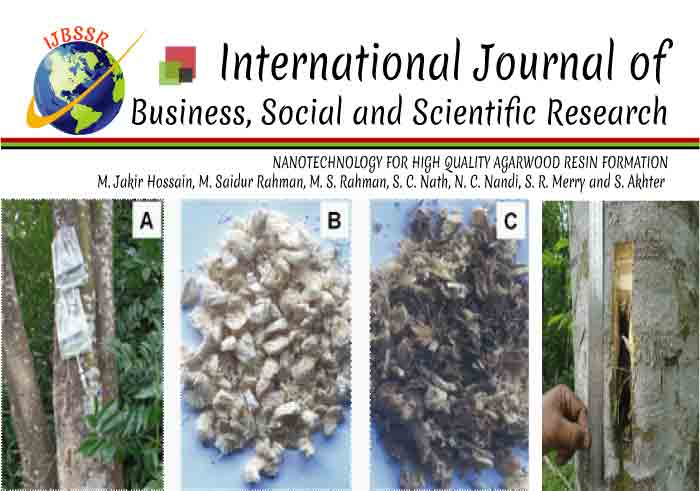NANOTECHNOLOGY FOR HIGH QUALITY AGARWOOD RESIN FORMATION

Agar, a highly priced
non-timber forest product traded internationally that is extremely rare.
However, as only infected trees produce agar; uninfected trees are of
negligible commercial value. Due to the nature of its very low formation
artificial inoculation technologies are becoming more popular than depending on
natural agar formation. In this article we describe the effect of different
chemicals and hydrosols of nanoparticles (NPs) as inocula in artificial agar
production. We applied those inocula into the xylem-phloem layer of total 45
(forty-five) agarwood trees at 8 (eight) different gardens of Bangladesh
through transfusion set or by special technique to artificially inoculate them.
We successfully prepared platinum, gold, silver and iron oxide NPs (IONPs)
hydrosols with an average core diameter 2.1± 0.4 nm, 2.8± 0.5, 4.3± 0.8
and 8.5±1.1 nm respectively and applied them as
inocula. Only in case of platinum and IONPs the white wood became gray to black colored around the
zone of application, mostly in the longitudinal direction within three months whereas the traditional iron
nailing method takes more than three years. Some water-soluble chemicals
inocula especially iron containing but chloride free mixed inocula were also
very effective to produce agar. The produced agar has the similar physical and
fragrant properties as produced by natural agar formation or iron nailing
method.

